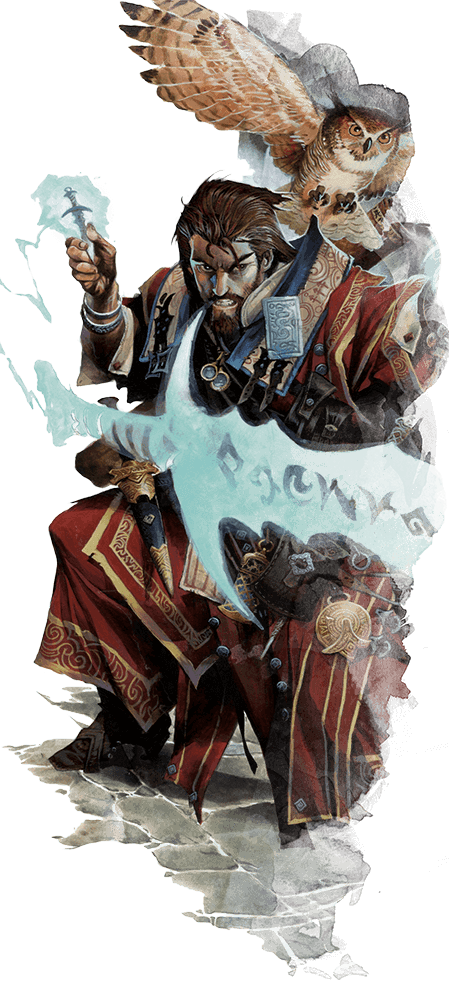- D 26d5e Does Spiritual Weapon Get Hunter 27s Mark Dmg 2
- D 26d5e Does Spiritual Weapon Get Hunter 27s Mark Dmg 1
- D 26d5e Does Spiritual Weapon Get Hunter 27s Mark Dmg Price
- D 26d5e Does Spiritual Weapon Get Hunter 27s Mark Dmg 5e

Magic weapons have enhancement bonuses ranging from +1 to +5. They apply these bonuses to both attack and damage rolls when used in combat. All magic weapons are also masterwork weapons, but their masterwork bonus on attack rolls does not stack with their enhancement bonus on attack rolls. Weapons come in two basic categories: melee and ranged. Do they have a cadre of worshippers who use a particular weapon? If so, that's the weapon. If not, they likely don't have a weapon and I'd suggest just using the basic Spiritual Weapon wording. If you don't know the answer immediately, then you get to be the one to figure it out based on what you do know about the deity (assuming you're the DM).
A weapon made of pure force springs into existence and attacks opponents at a distance, as you direct it, dealing 1d8 force damage per hit, +1 point per three caster levels (maximum +5 at 15th level). The weapon takes the shape of a weapon favored by your deity or a weapon with some spiritual. Clerics of deities who are associated with a particular weapon (as St. Cuthbert is known for his mace and Thor for his hammer) make this spell’s effect resemble that weapon. At higher level. When you cast this spell using a spell slot of 3rd level or higher, the damage. Clerics of deities who are associated with a particular weapon (as St. Cuthbert is known for his mace and Thor for his hammer) make this spell’s effect resemble that weapon. At Higher Levels. When you cast this spell using a spell slot of 3rd level or higher, the damage.
Evocation [Force]
| Level: | Clr 2, War 2 |
|---|---|
| Components: | V, S, DF |
| Casting Time: | 1 standard action |
| Range: | Medium (100 ft. + 10 ft./level) |
| Effect: | Magic weapon of force |
| Duration: | 1 round/level (D) |
| Saving Throw: | None |
| Spell Resistance: | Yes |
A weapon made of pure force springs into existence and attacks opponents at a distance, as you direct it, dealing 1d8 force damage per hit, +1 point per three caster levels (maximum +5 at 15th level). The weapon takes the shape of a weapon favored by your deity or a weapon with some spiritual significance or symbolism to you (see below) and has the same threat range and critical multipliers as a real weapon of its form. It strikes the opponent you designate, starting with one attack in the round the spell is cast and continuing each round thereafter on your turn. It uses your base attack bonus (possibly allowing it multiple attacks per round in subsequent rounds) plus your Wisdom modifier as its attack bonus. It strikes as a spell, not as a weapon, so, for example, it can damage creatures that have damage reduction. As a force effect, it can strike incorporeal creatures without the normal miss chance associated with incorporeality. The weapon always strikes from your direction. It does not get a flanking bonus or help a combatant get one. Your feats or combat actions do not affect the weapon. If the weapon goes beyond the spell range, if it goes out of your sight, or if you are not directing it, the weapon returns to you and hovers.
Each round after the first, you can use a move action to redirect the weapon to a new target. If you do not, the weapon continues to attack the previous round’s target. On any round that the weapon switches targets, it gets one attack. Subsequent rounds of attacking that target allow the weapon to make multiple attacks if your base attack bonus would allow it to. Even if the spiritual weapon is a ranged weapon, use the spell’s range, not the weapon’s normal range increment, and switching targets still is a move action.
A spiritual weapon cannot be attacked or harmed by physical attacks, but dispel magic, disintegrate, a sphere of annihilation, or a rod of cancellation affects it. A spiritual weapon’s AC against touch attacks is 12 (10 + size bonus for Tiny object).
If an attacked creature has spell resistance, you make a caster level check (1d20 + caster level) against that spell resistance the first time the spiritual weapon strikes it. If the weapon is successfully resisted, the spell is dispelled. If not, the weapon has its normal full effect on that creature for the duration of the spell.
The weapon that you get is often a force replica of your deity’s own personal weapon. A cleric without a deity gets a weapon based on his alignment. A neutral cleric without a deity can create a spiritual weapon of any alignment, provided he is acting at least generally in accord with that alignment at the time. The weapons associated with each alignment are as follows.
Chaos
Battleaxe
Evil
Good
Warhammer
Law
Longsword
The Hypertext d20 SRDTM is owned by BoLS Interactive LLC.
The text on this page is Open Game Content, and is licensed for public use under the terms of the Open Game License v1.0a.
‘d20 System’ and the ‘d20 System’ logo are trademarks of Wizards of the Coast, Inc.
and are used according to the terms of the d20 System License version 6.0.
A copy of this License can be found at www.wizards.com/d20.
Schoolevocation [force]; Levelcleric/oracle 2, inquisitor 2, shaman 2; Domainwar 2


CASTING
D 26d5e Does Spiritual Weapon Get Hunter 27s Mark Dmg 2
Casting Time 1 standard action
Components V, S, DF
EFFECT
Range medium (100 ft. + 10 ft./level)
Effect magic weapon of force
Duration 1 round/level (D)
Saving Throw none; Spell Resistance yes
DESCRIPTION
D 26d5e Does Spiritual Weapon Get Hunter 27s Mark Dmg 1
A weapon made of force appears and attacks foes at a distance, as you direct it, dealing 1d8 force damage per hit, + 1 point per three caster levels (maximum +5 at 15th level). The weapon takes the shape of a weapon favored by your deity or a weapon with some spiritual significance or symbolism to you (see below) and has the same threat range and critical multipliers as a real weapon of its form. It strikes the opponent you designate, starting with one attack in the round the spell is cast and continuing each round thereafter on your turn. It uses your base attack bonus (possibly allowing it multiple attacks per round in subsequent rounds) plus your Wisdom modifier as its attack bonus. It strikes as a spell, not as a weapon, so for example, it can damage creatures that have damage reduction. As a force effect, it can strike incorporeal creatures without the reduction in damage associated with incorporeality. The weapon always strikes from your direction. It does not get a flanking bonus or help a combatant get one. Your feats or combat actions do not affect the weapon. If the weapon goes beyond the spell range, if it goes out of your sight, or if you are not directing it, the weapon returns to you and hovers.

Each round after the first, you can use a move action to redirect the weapon to a new target. If you do not, the weapon continues to attack the previous round’s target. On any round that the weapon switches targets, it gets one attack. Subsequent rounds of attacking that target allow the weapon to make multiple attacks if your base attack bonus would allow it to. Even if the spiritual weapon is a ranged weapon, use the spell’s range, not the weapon’s normal range increment, and switching targets still is a move action.
A spiritual weapon cannot be attacked or harmed by physical attacks, but dispel magic, disintegrate, a sphere of annihilation, or a rod of cancellation affects it. A spiritual weapon‘s AC against touch attacks is 12 (10 + size bonus for Tiny object).
D 26d5e Does Spiritual Weapon Get Hunter 27s Mark Dmg Price
If an attacked creature has Spell Resistance, you make a caster level check (1d20 + caster level) against that Spell Resistance the first time the spiritual weapon strikes it. If the weapon is successfully resisted, the spell is dispelled. If not, the weapon has its normal full effect on that creature for the duration of the spell.
The weapon that you get is often a force replica of your deity’s own personal weapon. A cleric without a deity gets a weapon based on his alignment. A neutral cleric without a deity can create a spiritual weapon of any alignment, provided he is acting at least generally in accord with that alignment at the time. The weapons associated with each alignment are as follows:
D 26d5e Does Spiritual Weapon Get Hunter 27s Mark Dmg 5e
- chaos (battleaxe)
- evil (light flail)
- good (warhammer)
- law (longsword)